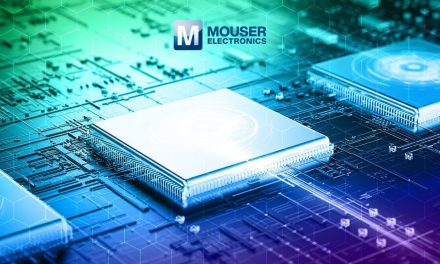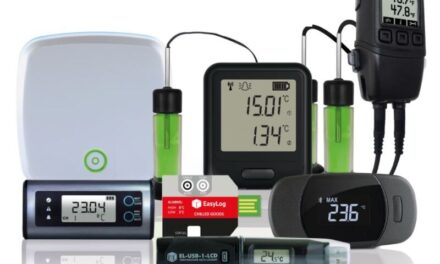Fujitsu Laboratories and imec Holst Centre have developed a wireless transceiver circuit for use in body area networks (BAN) for medical applications that is known to adhere to the 400MHz-band international standard.
While the subject of high expectations for medical applications, wireless monitoring of brainwaves or other vital signs has in the past required over a dozen milliwatts (mW) of electric power, the companies advise that, now, however, by optimising the architecture and circuitry, they have succeeded in reducing the electric power requirements of wireless transceiver front-ends, to just 1.6mW when receiving data and 1.8mW when transmitting.
This technology has the capacity to extend the battery life of conventional sensor products used for patient monitoring by some ten-fold. In effect this could cut the frequency of battery replacement or recharges, lightens the burden on patients, and increases the work efficiency of medical practitioners.
Based on this joint research into wireless transceiver technology, Fujitsu Laboratories plans to apply it to non-medical uses, as well, such as to the monitoring of societal infrastructure, thereby further enhancing network front-end interface technologies.
Technological Issues
The component in the sensor node that draws the most power is the wireless transceiver circuit, so to extend battery life, the power demands of that part need to be reduced. The challenge has been in developing a compact, low-power transceiver that can support the variations in transfer rates which medical systems require, without adding any new circuitry.
This research project stipulated a 400-MHz wireless specification compliant with IEEE 802.15.6, the international standard for BANs, and support for two independent modes: a 4.5 Mbps high-speed mode capable of transmitting brainwaves, images, and other data needed in medicine, and an 11.7 kbps low-speed, low-power mode for low-power operations when sensor nodes are on standby.
Two points about the new technology
1. Digitally controlled receiver technology
Simplifying the architecture of the transceiver circuit as much as possible has resulted in lower power demands. The digitally controlled transceiver circuit uses a programmable structure that can change its circuitry characteristics to support different phase and frequency modulation methods in adherence to BAN international standards. The receiver consists of a low-noise amplifier, mixer, low-pass filter, and AD converter, and uses a direct-conversion technique that extracts the baseband signal (*1) directly from the incoming wireless signal. The use of this technique, along with minimised power requirements for all of the constituent circuitry, made it possible to greatly reduce power requirements.
The 4.5-Mbps high-speed mode optimises the frequency characteristics of the low-pass filter and AD converter through digital circuits. In the 11.7-kbps low-speed, low-power mode, the low-noise amplifier operates at lower power, which degrades its sensitivity, but digital processes compensate for this.
2. High-speed digital three-point modulation technology
Using a transmitting mixer in the transmitter makes it easier to implement high-speed mode, but mixers and their driver circuitry are known to greatly increase power demands. A combination of the following three techniques resulted in low-power operation.
Rather than using a transmitting mixer, the circuitry uses a digital three-point modulation scheme in which a PLL (*2), which generates the wireless signal from the digital circuit, takes as input high-frequency and low-frequency signals, and, similarly, the amplified transmit signal is input to the power amplifier.
To implement the high-speed mode using digital three-point modulation, a dual-varactor circuit technology was developed that, when in high-speed mode, increases the variation in the varactor’s (*4) capacitance at the
VCO (*3), which takes the high-frequency modulated signal as input.
For low-speed/low-power mode, a low-power technology was developed that reduces the VCO modulation circuit’s baseline current by 90% while still allowing modulation.
These technologies support both a low-speed mode and high-speed mode with more than 300 times the transfer rate, resulting in a maximum power consumption of 1.6 mW when receiving and 1.8 mW when transmitting.
Results
This transceiver circuit for healthcare applications has potential applications beyond patient monitoring, and could be used as a sensing front-end interface for medical-device management (Figure 3). In both applications, the lifespan of the batteries used in the sensor nodes will be greatly extended, relieving the burden on patients and making operations more efficient for medical practitioners.
Future Plans
Based on the newly developed wireless transceiver technology, Fujitsu Laboratories plans to extend its application beyond medicine and healthcare, applying it as a fundamental network front-end technology for use in such areas as agriculture and livestock management, monitoring of societal infrastructure and structures, factory monitoring, and environmental monitoring.
Glossary and Notes
1. Baseband signal: The wireless carrier wave before modulation, or the
signal after demodulation.
2. PLL: Phase-locked loop. A circuit that generates many types of
wireless signals in comparison to a reference signal.
3. VCO: Voltage-controlled oscillator. A circuit that varies an
oscillator’s frequency in response to an input voltage.
4. Varactor: An element whose capacitance changes in response to an applied voltage
Fujitsu
Fujitsu Laboratories
imec Holst Centre



